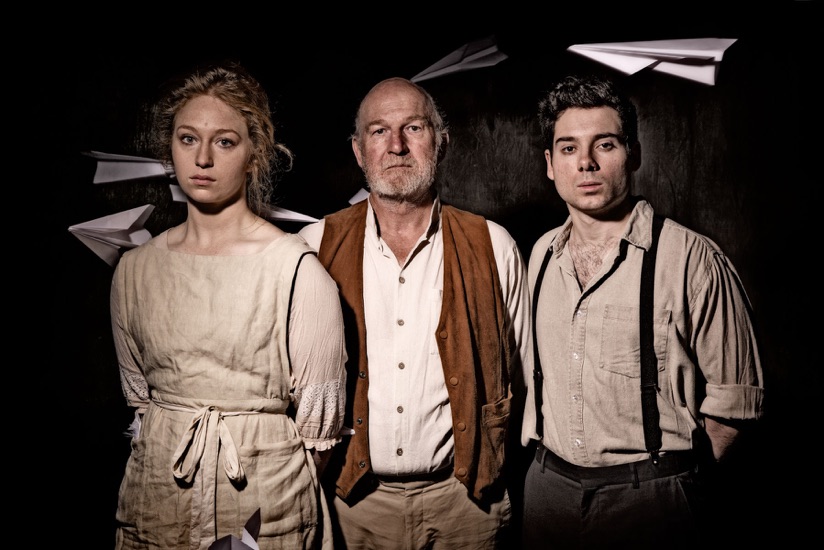Verity: I’ll be
opening a new show on Wednesday 3rd August at The Space in the
Adelaide Festival Centre. Well, it’s a new-old show, called The Red Cross Letters. It’s the most
verbatim piece I’ve ever been associated with, with every word spoken by the
actors taken from a
selection from 8,000 packets of letters held by the State Library of SouthAustralia. The correspondence is between the (mostly South) Australian Red Cross Information Bureau, and the bereaved relatives of soldiers lost, killed or
wounded during World War 1. It’s one of the most comprehensive collections of
such letters in the world. A treasure.
The
current, fully-staged show (presented by the State Theatre Company of SA and
directed by Andy Packer, from the Slingsby Company) has developed from an
initial reading, held in 2013. This new version is supplemented by more
information about the lives of particular soldiers than was available in 2013;
and – this being Adelaide – no sooner had initial publicity started for the
show than yet more new information appeared.
One of
‘my’ soldiers was a young man, the longed-for s
I’d
imagined Julia (‘Mrs J E Williams’ as she signed herself every time except the
once when she must have forgotten her formal manners), and I’d imagined her
lost Edgar. We do have photographs, mostly from death notices in The Chronicle, Adelaide’s then-newspaper,
of some of the young men whose stories we tell, but not many. And we don’t have
any photographs of the family members who with such naive dignity sought news
of their sons, brothers, brothers-in-law, husbands and fiancés. But in Adelaide
there are only, say, two degrees of separation in any social connection and
thus – by a series of serendipitous connections – we have now connected with
the descendants of two of Edgar’s older sisters, both of whom are demon researchers
and…we have some additional images. Below is a picture of Philip ‘Edgar’ Williams,
and also a picture of his parents about ten years after his death. Julia must
have been a very young mother because, with that dark hair, she couldn’t be
much more than in her early fifties. Edgar is still just ‘young’, his face in
that slouch hat is still soft and unformed, with its blush of red added to the
lips of a sepia photograph, and you have no real idea of the man he might have
become; but I have to say, Julia looks exactly
how I imagined she would.
I’ve
found the show immensely rewarding to work on. The material is so simple, but so sad. The sub-text speaks
to the simplicity and modesty of the lives of Australians back then, and the
curious innocence of all not directly concerned with the massive slaughter.
There is an added piquancy for a South Australian audience in hearing the place
names with which they are so familiar in such a different context.
And here are my newly discovered people.
And here are my newly discovered people.


















No comments:
Post a Comment